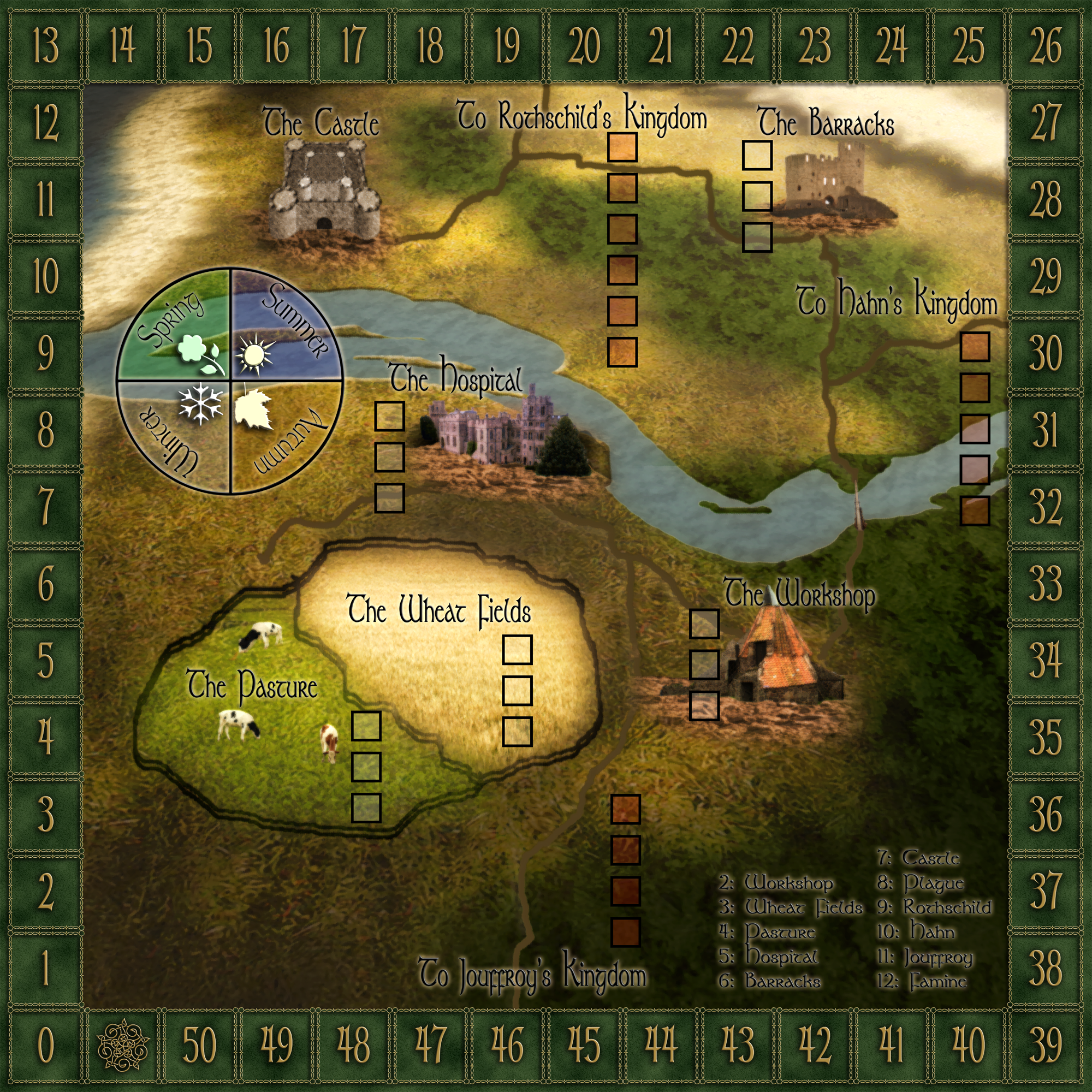So, where am I? I've actually already ordered a copy of Cheshire's Kingdom from The Game Crafter. Part of me says "It's way too early for that", but the other part (which obviously won) says "yeah.... but I WANT too!" Perhaps this is just me trying to justify it, but I do believe that creating the board helps me develop the game. The board is pretty good looking if I say so myself. I suppose it's time for me to figure out how to attach a picture to the blog.... (as I typed that, I felt completely technologically inept... did I mention I'm a Software Developer by trade! :) )
Ok, so here's what's changed:
- Movement: I got rid of the concept of movement. Players no longer have a physical presence on the board, they just take one kind of action. The board is there to show where workers are assigned. There simply weren't enough places for people to go to make this a meaningful part of the game.
- Food Production: A subtle change / clarification to the way the food production works. I've decided that workers that are working in the fields eat for free, but produce extra food for the rest of the workers. You may be asking your self. "Isn't that just like each worker in the fields producing 2 food and not having a special eat-for-free rule?" No, it's subtly different because of stacking. Here's a simple case, population of 3 and two of them produce food (stacked). With the produce-2-food model we get this: 2 workers, stacked is like 5 workers so they produce 10 food for a population of 3 that leaves an excess of 7. With the eat-for-free model we get this: 2 workers, stacked is like 5 workers so they produce 5 food for a population of 3 (but only one eats) that leaves an excess of 4. But the real motivation for this change is that I'm going to have other multipliers in this game and I wanted to keep the math as simple as possible.
- Repairs: I talked about repairing roads in the first post, but now that there is no player movement, roads don't mean much. So now you have to repair the actual buildings. Each build has a place for 3 damage. the first damage does nothing. The second one prevent stacking in that area, the third damage prevents the building from functioning at all.
- Plagues: my current thought on how this works is as follows: When a plague occurs people may die. The base number is 1/2 the population (rounding down). But you get to subtract 1 for every worker in the hospital (including stacking). I feel like there needs to be more here though... there's not much for a player to do about this. The disaster just occurs without warning and you deal with it. Here's a raw idea that I just this instant came up with. What if you placed sick workers on the calendar (that the circular thing with the seasons on it) that represented how long they were sick for and you had by that time to use your doctors on them until they died.... I like this idea. I'll have to think about it more. I was going to use the calendar for another purpose that will likely have to change... I like this idea better.
- War: This hasn't changed much, except that I made a vague mention to "power" in my last post and I think understand better what that is. I think is a the number of dice that the opponent rolls to represent their strength. I've never been huge on dice in games, but here it seems to work for me.
- Events: I changed the event decks (that I mentioned but didn't go into) to a simple dice system, This was largely driven by cost of game concerns, but now that I've grown accustomed to the idea, I kind of like it even if money was no object. The idea now is that at the end of each turn, a player rolls 2 dice and that drives 1 or possibly 2 events. First, it drives a bad event. The bad events are numbered on the bottom right of the board. They include rising hostilities with a neighbor, damage to a building, plagues and famines and also an annoyance from the King himself; he request the service of a worker in the castle. You can move him right back at your next opportunity, but it could add some grief. Also, if you roll doubles you add a worker to your population.


No comments:
Post a Comment